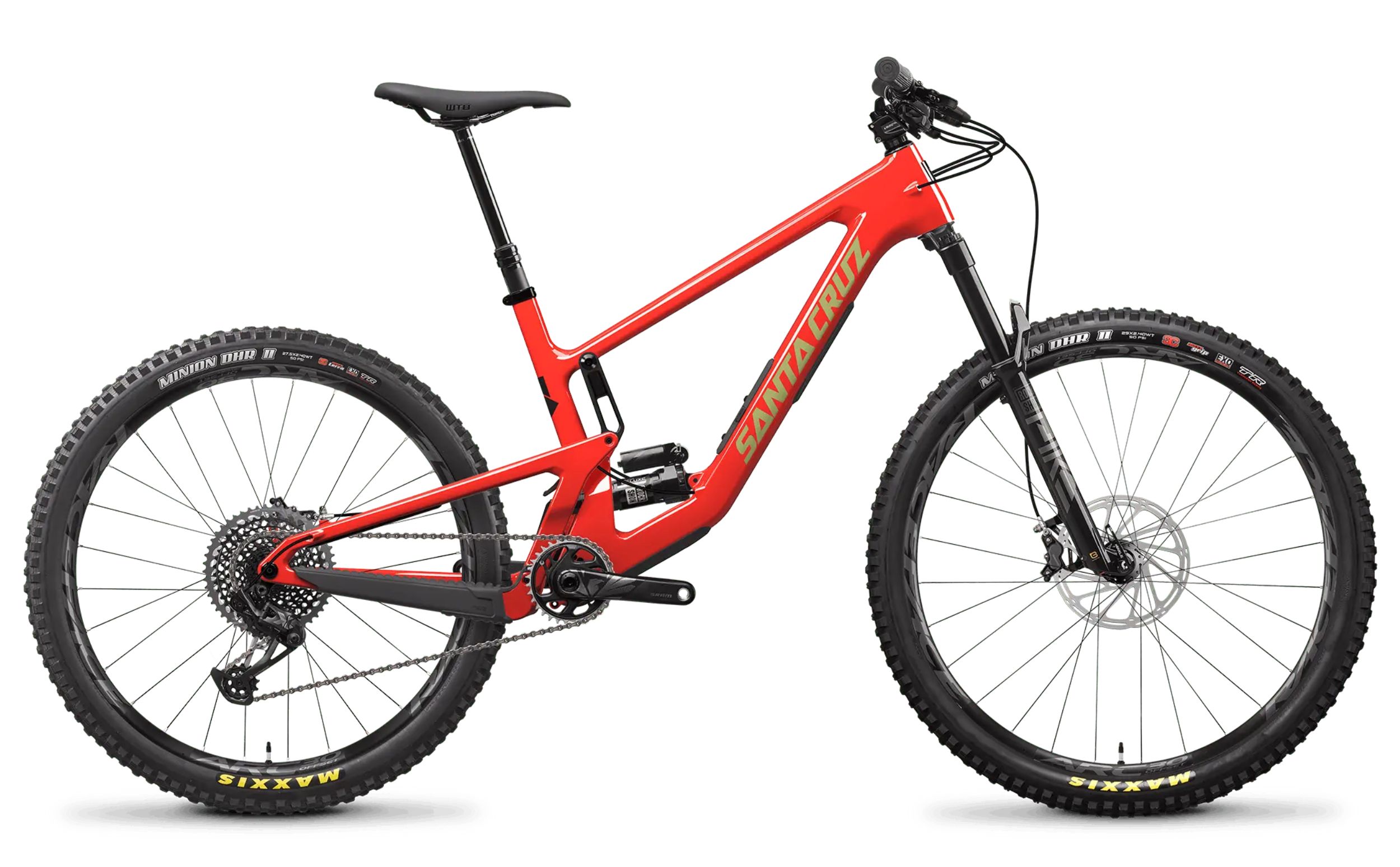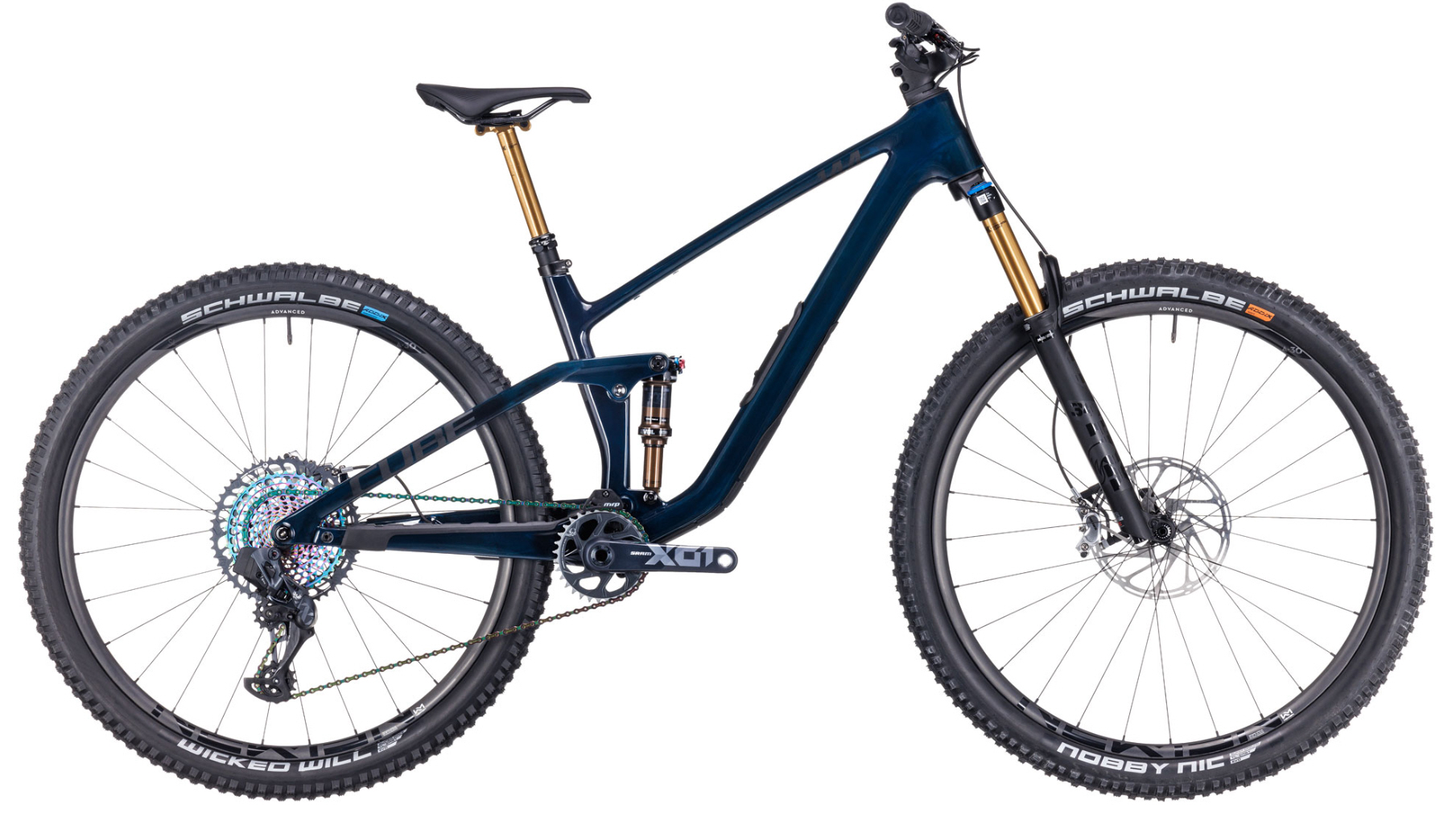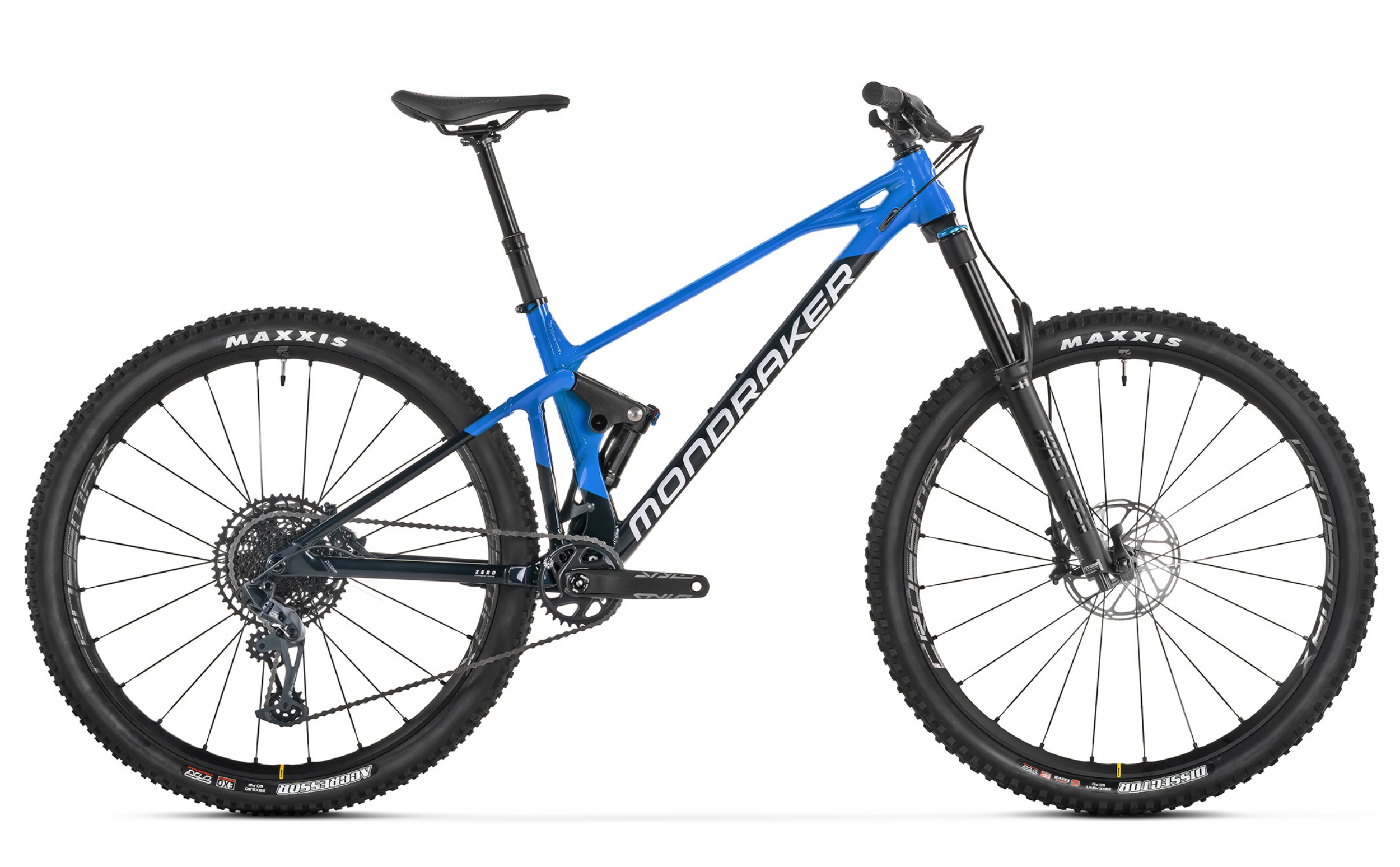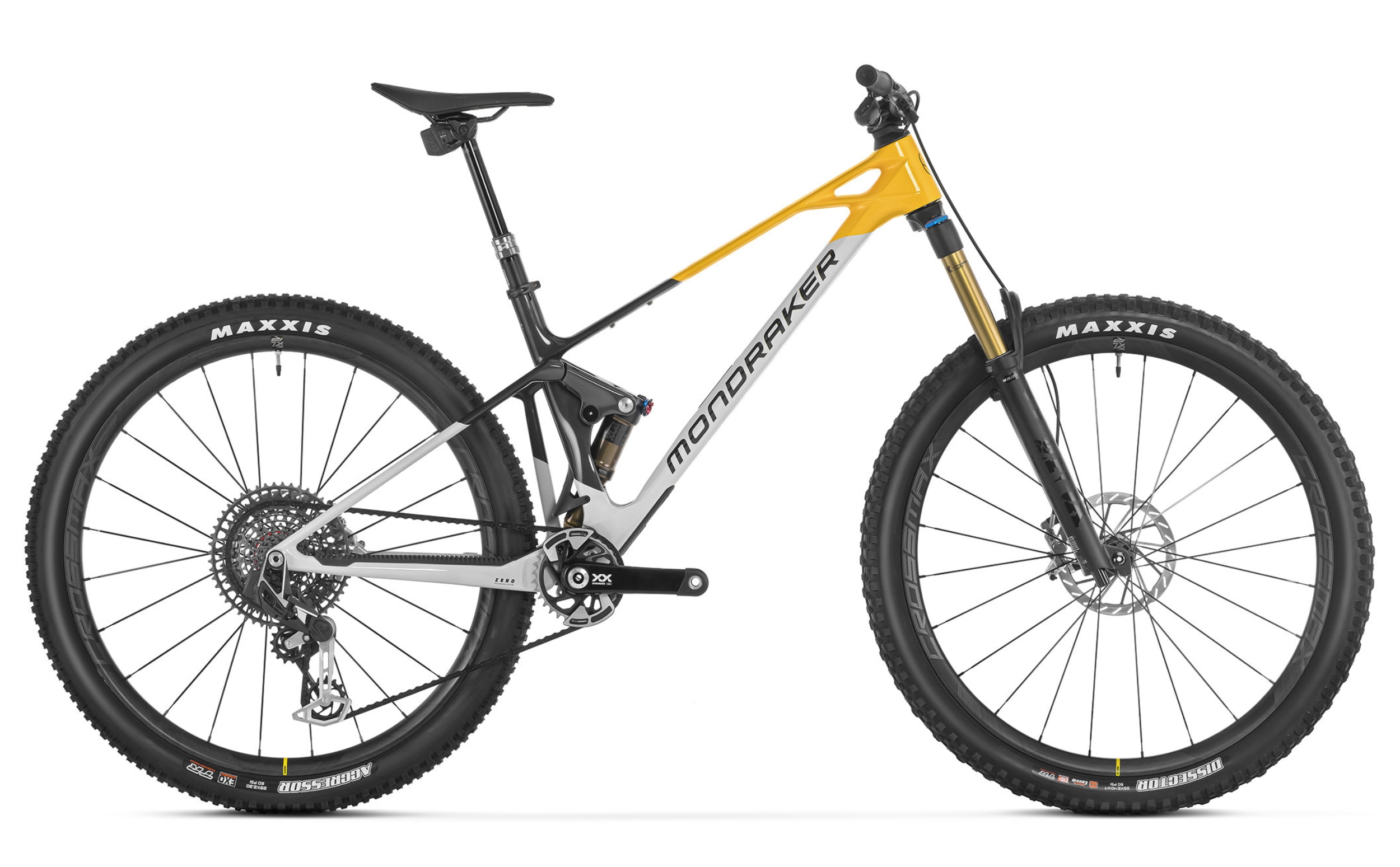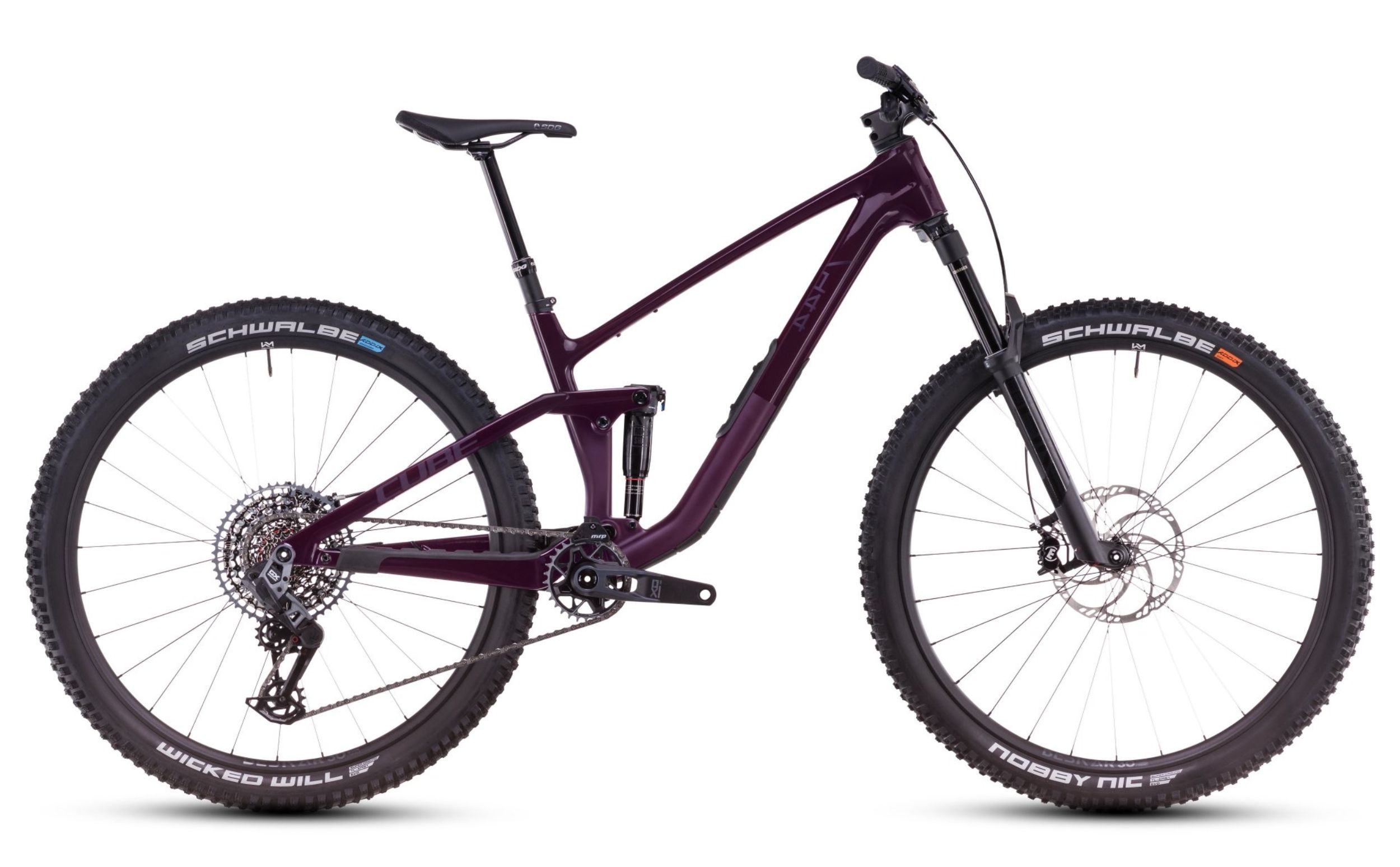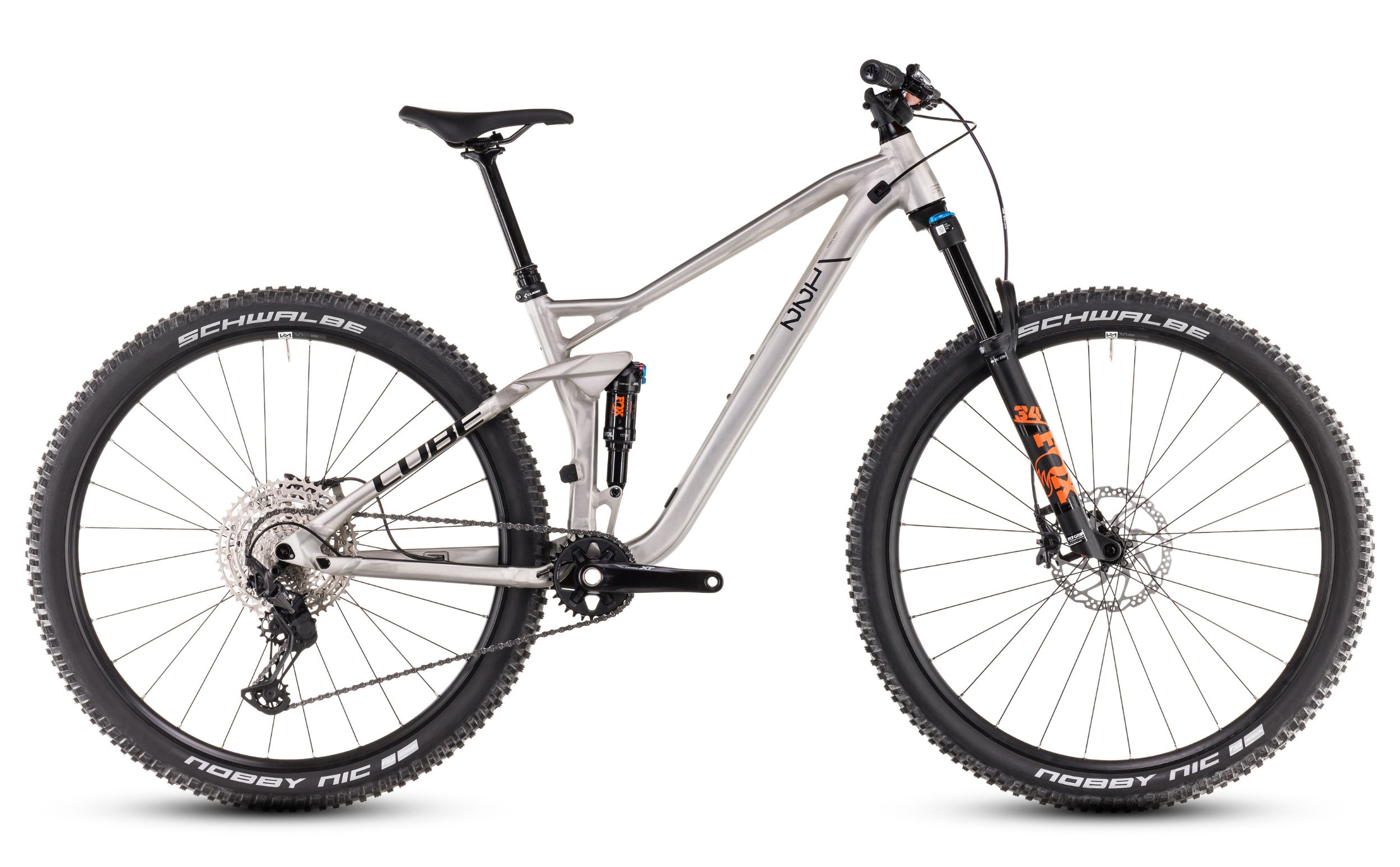Buy a trail bike - all mountain and trail bikes at STATERA
Would you like to buy a new trail bike or all-mountain bike? At STATERA, you'll find a wide selection of high-quality models that are perfectly tailored to your needs. Whether you're a beginner or an experienced biker, we'll help you find the right bike for your adventures. In this comprehensive guide, you'll learn everything you need to know about trail bikes and all-mountain bikes so that you can make an informed and, above all, correct purchase decision.
What is a trail bike - what features does it have?
A trail bike is a versatile mountain bike designed for different terrains and riding conditions. It offers a balanced mix of climbing ability and downhill performance, making it ideal for riders who want to have fun both uphill and downhill. As the name suggests, it feels most at home on trails, but this does NOT mean that the odd detour to the bike park is impossible. Trail bikes are characterised by the following features:
- Suspension travel: Trail bikes usually have a suspension travel of 120 to 150 mm. This suspension travel provides sufficient damping for rough terrain without compromising climbing efficiency. The suspension helps to absorb shocks and thus ensures greater comfort and control.
- Geometry: The geometry of a trail bike is designed to provide stability at high speeds while remaining agile enough for technical passages. A slack steering angle ensures stability, while a steep seat angle improves climbing ability.
- Frame: Robust frame materials such as aluminium or carbon ensure a good balance between weight and durability. Carbon frames are lighter and stiffer, while aluminium frames are more robust and less expensive.
- Components: High-quality components such as gears, brakes and wheels are crucial for the performance and durability of a trail bike. Reliable gears and powerful brakes ensure safety and riding enjoyment.
Trail bike or all-mountain bike - what are the differences?
Although the terms "trail bike" and "all-mountain bike" are often used interchangeably, there are subtle differences that you should be aware of:
- Area of use: Trail bikes are all-rounders that excel on both flow trails and technical trails. All mountain bikes, on the other hand, are designed more for tougher and more technical trails that require more suspension travel and more robust components.
- Suspension travel: All mountain bikes tend to have slightly more suspension travel (140-170 mm), which makes them better for aggressive descents. This extra travel offers more reserves for big jumps and rough terrain.
- Geometry: All mountain bikes often have a slightly slacker geometry, which offers more stability on fast descents, while trail bikes have a more balanced geometry for versatile use.
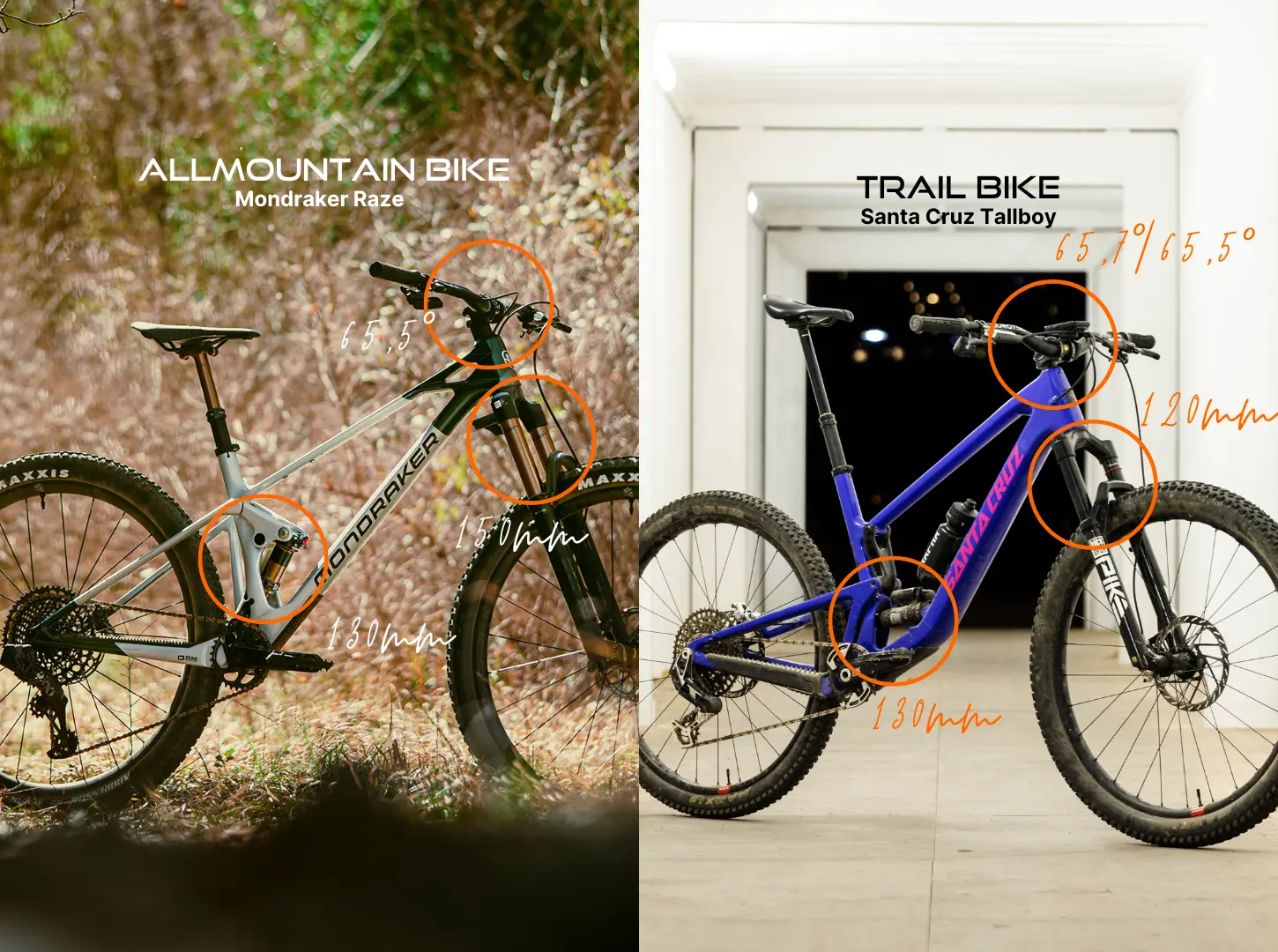
Enduro bike vs trail bike - what are the differences?
An enduro bike is designed for the most extreme conditions and the toughest descents, while a trail bike offers a more balanced performance:
- Suspension travel: Enduro bikes typically have a suspension travel of 150-180 mm, which makes them ideal for extreme descents, while trail bikes are 120-150 mm. The greater suspension travel of enduro bikes enables them to tackle larger obstacles and rougher terrain.
- Weight: Trail bikes are generally lighter and more efficient when climbing, while enduro bikes are more robust and stable for aggressive riding styles. Lighter trail bikes make pedalling uphill easier and offer more agility.
- Geometry: Enduro bikes have an even slacker geometry and longer wheelbases for maximum stability at high speeds. This geometry offers safety and control on fast and technical descents.
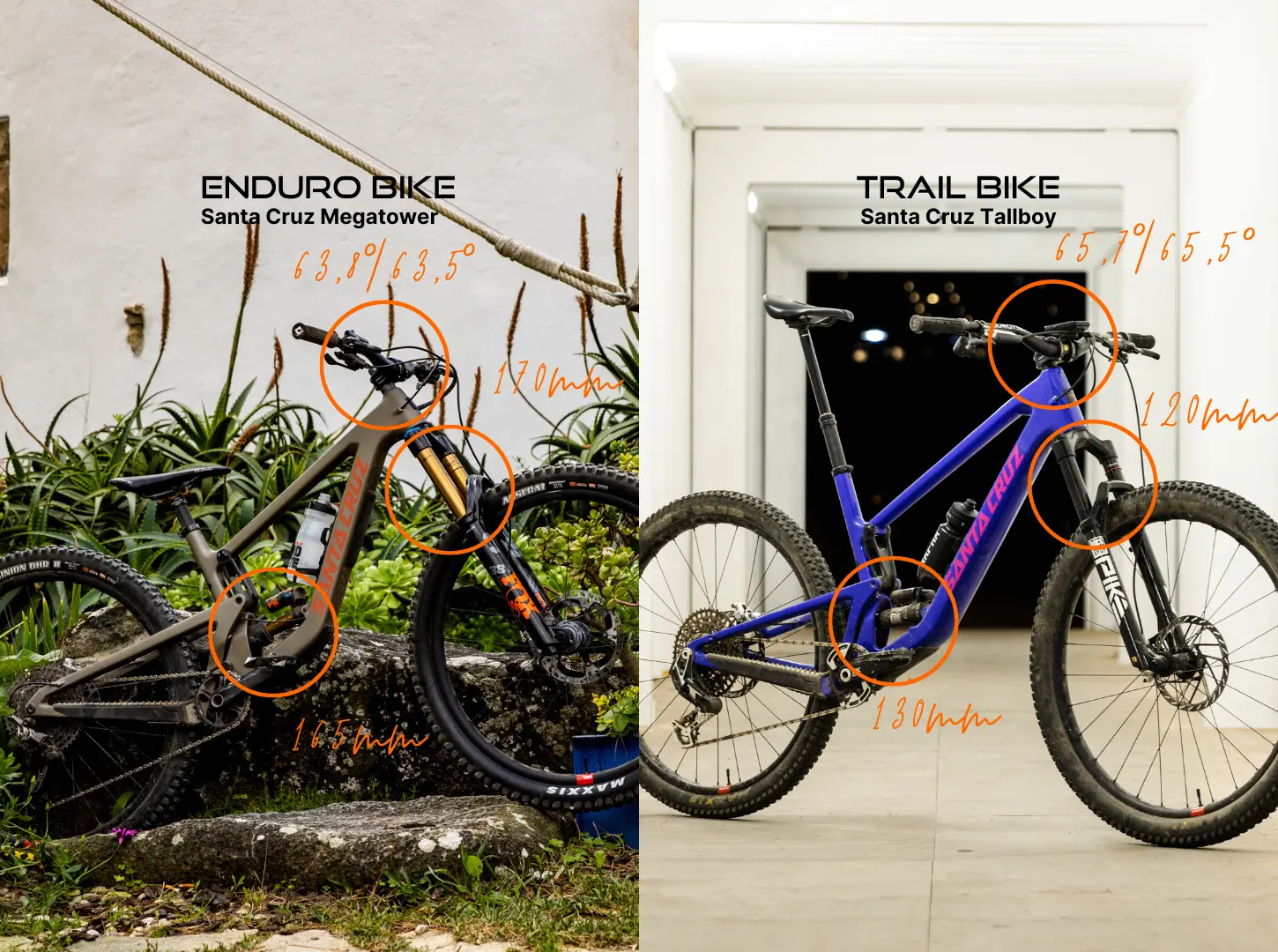
Who is the trail bike for?
Trail bikes are ideal for riders who are looking for a versatile bike that is fun to ride both uphill and downhill. They are suitable for:
- Recreational riders: Who like to ride long tours and enjoy varied trails. A trail bike offers comfort and performance for long rides.
- Ambitious bikers: Who want to tackle both technical passages and fast flow trails. The versatility of a trail bike makes it possible to master different types of terrain.
- Beginners: Who are looking for a good-natured but powerful bike that gives them confidence on different terrains. Beginners benefit from the balanced geometry and easy handling.
What should I look out for in a trail bike?
When buying a trail bike, there are several important factors that you should consider in order to find the right model for you:
The right geometry of trail or all-mountain bikes
The geometry of a bike has a significant influence on its riding behaviour. Look for a geometry that suits your riding style and preferred trails. A steeper steering angle offers more agility, while a slacker angle offers more stability at high speeds. The length of the top tube and the wheelbase also influence the handling and stability of the bike. Choosing the right size is also important here. If you are between two sizes, you can take 2 tips to heart:
- If you have a long torso and short legs, go for the larger size
- If you have a short torso and long legs, go for the smaller size
This will ensure that you can enjoy the perfect geometry on your trail bike even if you are between sizes.
How much suspension travel does a trail bike have? And how much suspension travel do I need?
The suspension travel is a decisive factor for the possible uses of your bike. Think about what kind of trails you mainly want to ride:
- 120-130 mm: Ideal for easy to moderate trails and longer tours on single trails. These bikes are efficient and still offer enough damping for bumpy sections.
- 140-150 mm: Offers more reserves for technical and more demanding trails. This suspension travel is ideal for riders who are often out and about on demanding terrain. This suspension travel is also suitable for the odd bike park excursion
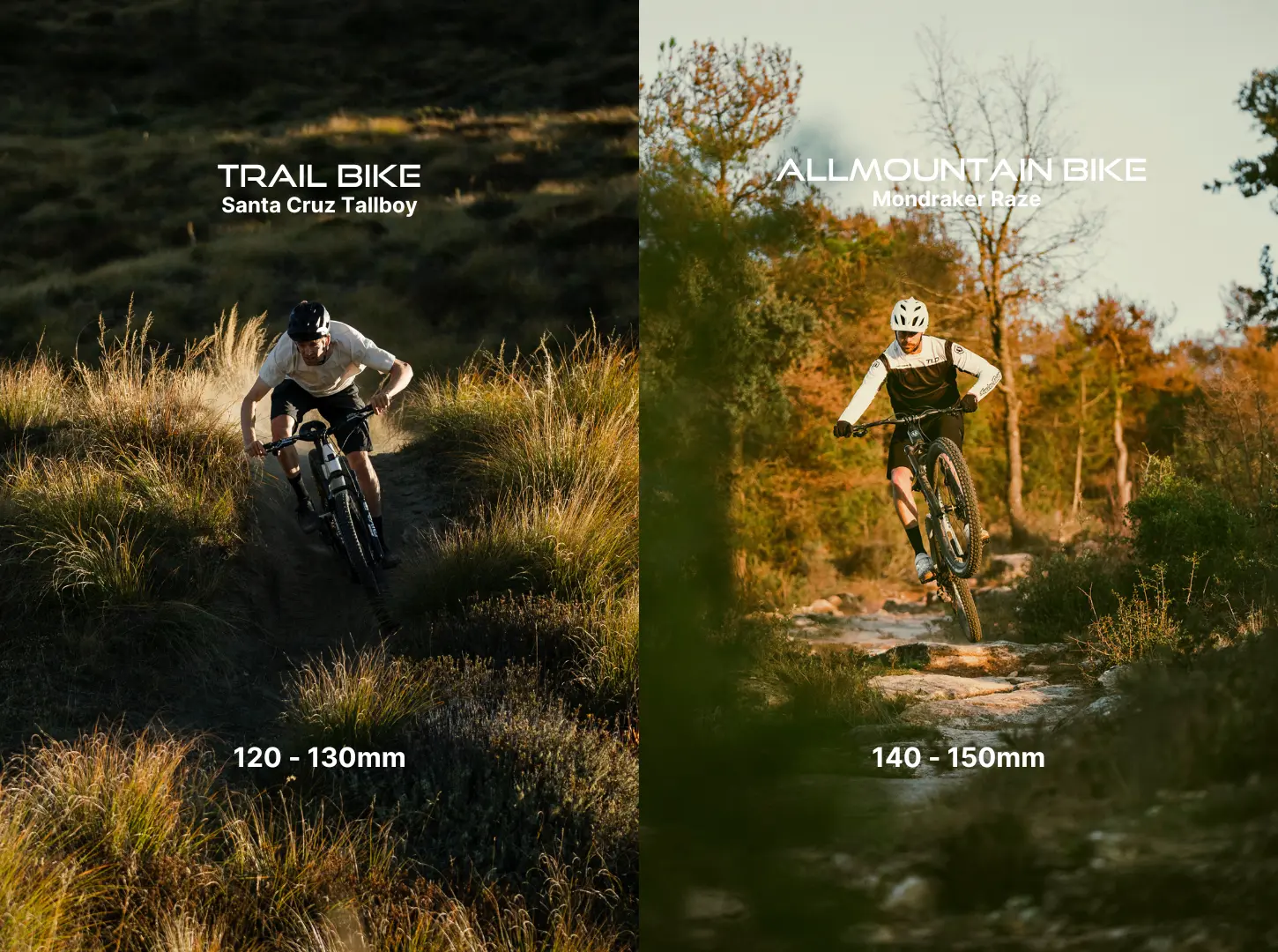
The right brakes for an all-mountain/trail bike
Brakes are crucial for your safety and control. Hydraulic disc brakes are standard on trail and all-mountain bikes as they offer excellent braking power and modulation. Make sure that the brakes are sufficiently dimensioned (at least 180 mm brake discs) to ensure reliable braking even on long descents. Most trail bikes have brakes in different sizes (200mm at the front, 180mm at the rear), which results in strong braking power at the front and good modulation at the rear.
The right wheel size
The wheel size has a significant influence on the riding behaviour:
- 27.5 inch: Offers more agility and is ideal for technically demanding trails. This size enables quick changes of direction and playful riding behaviour.
- 29 inch: Provides better rollover characteristics and is more efficient on long distances and fast descents. Larger wheels roll over obstacles more easily and offer more stability.
Which tyres are right for my trail bike?
The choice of tyres depends heavily on your riding style and the conditions in which you mainly ride:
- Width: 2.3 to 2.6 inch tyres are common widths that offer good grip and comfort. Wider tyres offer more traction and cushioning, narrower tyres roll easier and faster.
- Profile: Tyres with a good mix of grip and rolling resistance are suitable for mixed conditions. For very technical or muddy conditions, chunky tyres are more suitable. Make sure that the tyres are suitable for the respective surface and your riding style.
- Carcass: The carcass (sidewall of the tyre) is an important and major factor when choosing a tyre. It is decisive for the lateral stability of the entire tyre. While very stiff carcasses are very heavy and roll less well, slightly weaker carcasses are significantly lighter. Trail bikes usually have a slightly lighter carcass at the front and a slightly stronger one at the rear, which ensures good puncture protection but also sufficient lightness.
Why is a fully trail bike useful?
A full suspension bike offers several advantages over a hardtail (front suspension only):
- Comfort: the additional suspension on the rear wheel absorbs bumps and vibrations, which increases comfort on long rides. This is particularly advantageous on bumpy terrain and long tours.
- Traction: Better ground contact of the rear wheel provides more traction, especially in technical passages and when climbing. The rear suspension helps to transfer power better to the ground.
- Control: More damping means more control and safety, especially on demanding descents. The additional suspension makes it possible to tackle difficult and technical trails safely.
Buy all mountain/trail bikes online
At STATERA you will find a large selection of trail bikes and all-mountain bikes that cover all your needs. Our online shop offers detailed product descriptions, customer reviews and comprehensive advice to help you find the perfect bike for you. Use our bike finder and find your dream bike today! With this knowledge, you'll be well equipped to find the perfect trail bike and experience your next adventure. Have fun riding!
Wie schwer ist ein Trailbike?
Das Gewicht variiert je nach Rahmenmaterial und Ausstattung, liegt jedoch üblicherweise zwischen 12 und 15 kg.
Was ist ein MTB Trail Bike?
Ein MTB Trail Bike ist ein speziell für Trails entwickeltes Mountainbike, das eine ausgewogene Mischung aus Kletterfähigkeit und Abfahrtsperformance bietet.
Wie viel Federweg hat ein All Mountain Bike?
All Mountain Bikes verfügen in der Regel über einen Federweg von 140 bis 170 mm.
Wo liegt der Unterschied zwischen einem Trailbike und einem All Mountain Bike?
Trailbikes sind leichter und effizienter beim Klettern, während All Mountain Bikes durch mehr Federweg und robustere Komponenten für aggressive Abfahrten optimiert sind.
Wie viel Federweg hat ein Enduro Bike?
Enduro Bikes besitzen typischerweise einen Federweg von 150 bis 180 mm, was sie für extrem anspruchsvolle Strecken prädestiniert.
Bist Du bereit, Dein nächstes Abenteuer zu starten?
Finde noch heute Dein Traumrad und überzeuge Dich selbst von der Leistung unserer Trail Bikes und All Mountain Bikes!






